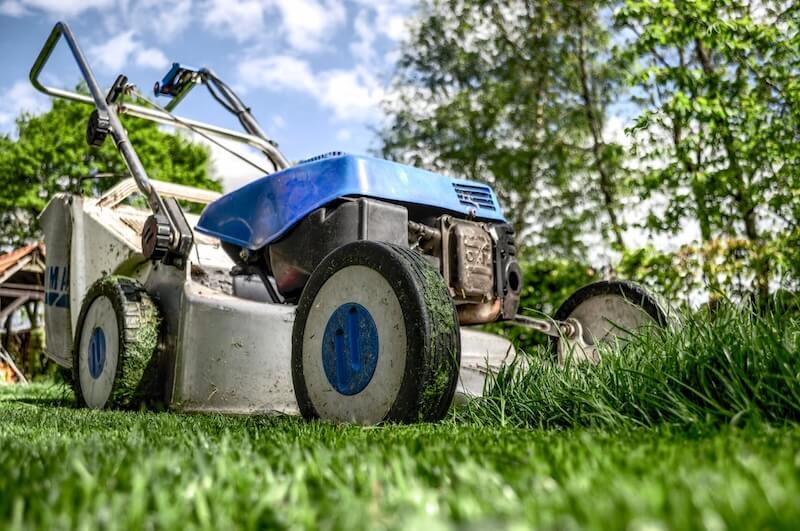Moving into a new house is an exciting milestone. As you settle in and start organizing your home, one important area that shouldn’t be overlooked is your lawn. Your lawn is your home’s first impression to neighbors, and taking the time to care for it early on can set the stage for a beautiful, lush outdoor space. If you’re a new homeowner looking for basic lawn care, this lawn care checklist will guide you through the essential steps to ensure your yard thrives after the move.
The Importance of Lawn Care for New Homeowners
Assess The Current Condition Of Your Lawn
Before diving into maintenance tasks, the first thing you should do is assess the current condition of your lawn when moving into a new house. Walk around the yard and note any issues, such as dry patches, overgrown areas, or invasive weeds. If the grass is yellowing or there are bare spots, it might be a sign that the previous owners didn’t keep up with proper care. This assessment will help you create a tailored lawn care plan based on your yard’s specific needs.
Related Links
- Top Considerations For Pest Management When Moving Your Business
- Moving Into A Pest-Free Home: What To Check Before You Buy
- Tips On How To Revive Your Lawn For Spring
- How To Prepare Your Property For A Bed Bug Treatment
- How To Ensure A Pest-Free Transition When Moving To A New House
Test Your Soil
Healthy soil is the foundation of a beautiful lawn. After moving in, it’s a good idea to test the soil to determine its pH level and nutrient content. You can purchase a simple soil testing kit from a garden center or hire a local expert for a professional analysis. Bad pH levels can lead to a number of problems like too much moss. Knowing your soil’s condition will help you choose the right fertilizers and amendments to ensure that your grass gets the nutrients it needs to thrive.
Mow The Lawn For The First Time
Once you’ve settled in, it’s time to mow the lawn. However, don’t be tempted to cut it too short. The first mow after moving in should be done with care, leaving the grass a bit longer to protect the root system. Set your mower blades high and aim to cut no more than one-third of the grass blade. This helps the grass retain moisture and promotes healthy growth. Consistent mowing at the right height will also prevent weeds from gaining a foothold in your yard.

Water Your Lawn Properly
Watering is crucial for maintaining a healthy lawn, but the timing and amount of water make all the difference. After moving in, take note of the weather patterns in your new area. In many regions, the best time to water is early morning when the temperature is cooler and less water evaporates. Deep, infrequent watering encourages roots to grow deeper, making your lawn more drought-resistant. Monitor how well your lawn absorbs water and adjust accordingly to avoid overwatering or causing runoff.
Fertilize For Growth
Fertilizing your lawn is one of the best ways to give it a nutrient boost, especially after the stress of a move. Once you’ve tested your soil, choose a fertilizer that addresses any deficiencies. Apply it during the appropriate season—usually spring or fall—for optimal growth. Fertilizers come in various formulas, so select one that suits your grass type and climate. Over-fertilizing can lead to damage, so follow the instructions carefully and avoid applying too much at once.
Address Weed Control Early
After moving in, you may find that weeds have taken over parts of your lawn. Weeds can compete with your grass for water, nutrients, and sunlight, making it harder for your lawn to grow thick and healthy. Start your weed control efforts by removing weeds by hand or using a targeted weed killer. Remember that some weed control methods may also harm your grass, so choosing products designed for your grass type and region is important.
Aerate The Soil If Needed
If your lawn feels compacted or you notice puddling after watering, it may be time to aerate. Aeration allows oxygen, water, and nutrients to reach the grassroots more effectively. You can rent an aerator or hire a professional to handle the job. Aerating your lawn is particularly beneficial if you’ve moved into an older home without being well-maintained or if the yard has experienced heavy foot traffic.
Reseed Bare Patches
During your lawn assessment, you may notice some bare or thin spots in the grass. These areas will need to be reseeded to encourage growth. Choose a grass seed that matches the type of grass in your lawn. Lightly spread the seed over the bare patches and then water them frequently to promote germination. Keep foot traffic to a minimum as the new grass grows to give the seedlings the best chance to establish strong roots.
Mulch And Edge Your Lawn For A Clean Look
Mulching and edging are often overlooked aspects of lawn care, but they can make a significant difference in the appearance of your yard. Spread a fresh layer of mulch around trees, flower beds, and bushes to retain moisture and prevent weeds. Edging along sidewalks, driveways, and garden beds creates a neat, polished look and helps prevent grass from creeping into unwanted areas. Both of these tasks are relatively simple but add to your lawn’s overall health and appearance.
Enjoy Your New Outdoor Space
With lawn care essentials in place, you can look forward to enjoying your outdoor space. Whether it’s for family gatherings, gardening, or simply relaxing a well-maintained lawn enhances the overall appeal of your home. Take pride in your work to create a welcoming, beautiful yard that reflects your style.
Moving to a new home often requires adjustments, especially when relocating internationally. For instance, moving from Canada to the US can be an exciting yet challenging process. Many homeowners ease the burden of relocation by hiring movers to ensure an easy transition to the US, allowing them to focus on tasks like lawn care and home setup without added stress.
Set Up A Lawn Care Schedule
A well-maintained lawn doesn’t happen overnight—it requires consistent care throughout the seasons. After moving in, take the time to set up a lawn care schedule. Your schedule should include regular mowing, watering, fertilizing, weed control, and seasonal tasks like aeration and overseeding. Adjust the schedule based on your climate; some regions may require more frequent care than others. A consistent lawn care routine will ensure your grass stays healthy and green year-round.

Prepare For Seasonal Changes
As the seasons change, so do the needs of your lawn. In cooler months, your lawn requires less frequent watering and mowing, while spring and summer demand more attention. Before winter arrives, take steps to prepare your lawn by clearing away debris, cutting the grass shorter, and applying a final round of fertilizer. Winterizing your lawn helps protect it from harsh conditions and ensures a faster recovery once spring rolls around.
Conclusion: Moving Into A New House With Your Lawn on Your Mind
In conclusion, lawn care is essential for new homeowners. You’ll create a thriving outdoor space by assessing its condition, testing the soil, mowing properly, and following a consistent care routine. With the right attention and dedication, your lawn can quickly become a source of pride and enjoyment in your new home.
Be Sure To Check Out Some Of Our Services:
Termites — Rodents — Mosquitoes — Bed Bugs









